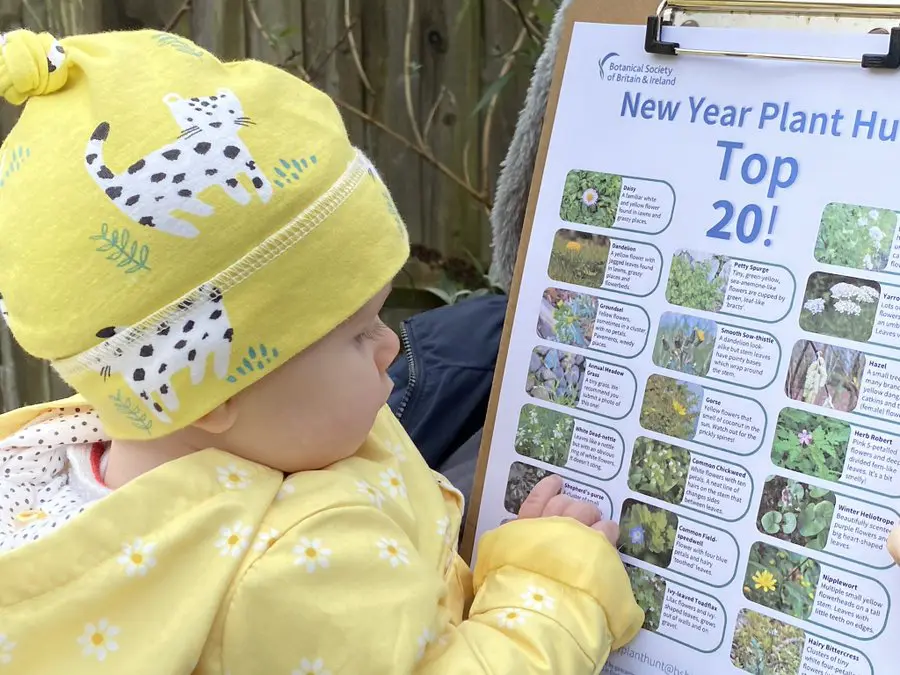Each year (since 2017, I think) the BSBI (Botanical Society of Britain and Ireland) have a citizen science project to find out what plants are in flower around New Year. This Year, the days to go out and look are from 29 December 2024 to 1 January 2025. There are lots of resources to help you here, including some spotter sheets with photos of the top ten or top twenty flowers you are likely to find. Here is an extract from their page:
 |
| Never too young to start! Photo copyright BSBI |
"visit our spotter sheet page to view or download our brand new selection of Top Ten and Top Twenty spotter sheets for England, Scotland, Wales, Northern Ireland, Republic of Ireland, Isle of Man and the Channel Islands. They will help you find the plants most likely to be in bloom in your area!"
I am normally in Scotland at New Year and given the cold local conditions, there are slim pickings when looking for flowers in bloom. However, this year I will be in the south of England and I am looking forward to going out with my 6 year old grandson and seeing what we can find. In preparation, I have printed out and laminated the Top Twenty sheet. I also went to look on the BSBI database to see what had been recorded near his house. Well, that was a bit of a shock - there was only one plant recorded nearby which was ivy! I'm sure we can find more than that - watch this space...
If you wanted to know what plants have been recorded near you, anyone can view the list by going to the BSBI database here. You will need to know your grid reference and if you don't have special permission, the results are no more precise than a 2km square. Go to Tools and pick "Taxon list for a grid square" and you will get a list of plants.
I really enjoy checking a database to find out what has been recorded in a place I am visiting. The British Lichen Society also has lists of lichen records so I went and checked there as well - none at all recorded where I am staying, and there is even a graveyard nearby - usually a good source of lichens. I will be somewhat limited as I won't have all my lichen kit with me but a handlens and a notebook will have to suffice. Maybe my next post should be on the lichen kit I keep accumulating....


























.jpg)

























